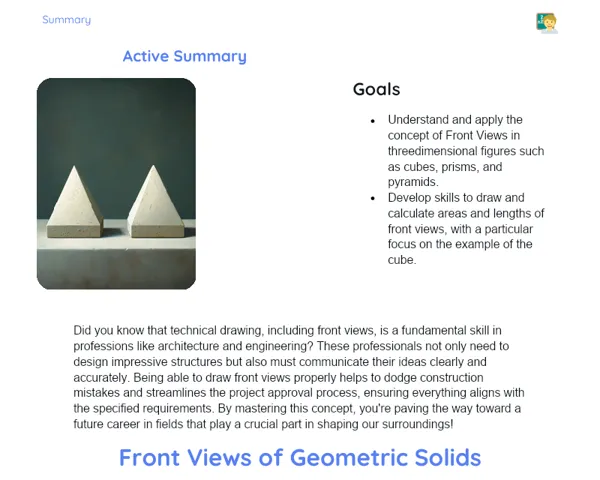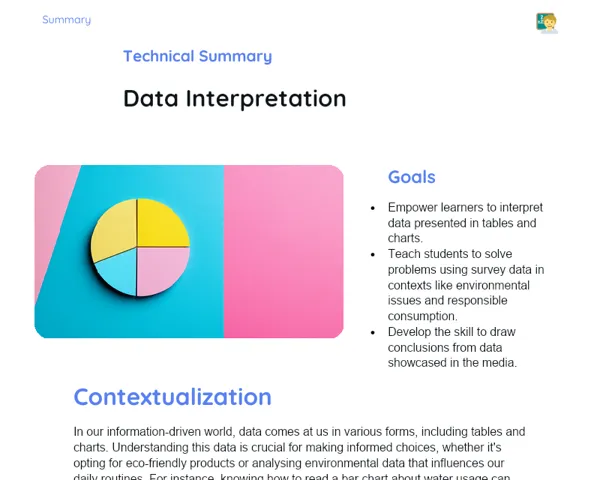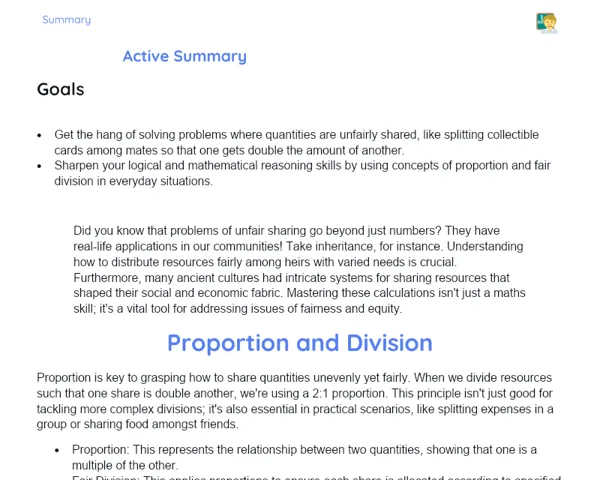Summary Tradisional | Exact Square and Cubic Roots
Contextualization
Today, we’re diving into the world of exact square and cube roots—essential maths skills that give us insight into numbers and their properties. Just like addition and multiplication, these roots play a pivotal role in mathematics and have practical applications in real life. For example, to find the area of a square, we rely on the square root, while the cube root helps us determine the volume of a cube. Professions like architecture, engineering, and computer science frequently use these concepts, showcasing their significance beyond the classroom.
Interestingly, the idea of square roots dates all the way back to ancient civilisations, such as the Babylonians, who used clay tablets to calculate them over 4,000 years ago. Fast forward to today, where these operations are at the heart of modern innovations, from gaming graphics to architectural design. This long-standing relevance highlights why grasping square and cube roots is crucial—not just for school success but also for real-world problem-solving.
To Remember!
Definition of Square Root
The square root of a number is a value that, when multiplied by itself, returns us to the original number. For instance, the square root of 16 is 4, since 4 x 4 gives us 16. This concept is fundamental in maths, symbolised by √. Practically speaking, finding the square root involves determining which number, when squared, results in the original value.
It’s important to note that not every number boasts an exact square root. Take 2 or 3 for example—there’s no whole number that, when multiplied by itself, results in exactly 2 or 3. For these numbers, the square root is classified as an irrational number, meaning it can’t be expressed as a precise fraction.
Understanding square roots is key for a range of arithmetic operations and real-life applications. For instance, when figuring out the area of a square, we rely on the square root to find the side lengths. This principle is also utilised across fields such as physics, engineering, and computing, where accurate calculations are vital.
-
The square root of a number is a value that, when multiplied by itself, results in the original number.
-
Not all numbers have an exact square root.
-
The square root is represented by the symbol √.
Examples of Exact Square Roots
To clarify things for students, it’s useful to provide a list of exact square roots for numbers from 1 to 100. For example, the square root of 1 is 1, of 4 is 2, of 9 is 3, and so on, with the square root of 100 being 10. These examples help illustrate how square roots function and reveal underlying patterns.
Additionally, we need to stress that some numbers—like 2, 3, 5, and 7—do not have exact square roots. These produce square roots that are irrational. For example, the square root of 2 is roughly 1.414, a number that cannot be presented as a clean fraction.
Recognising which numbers possess exact square roots and which do not is crucial for tackling mathematical problems. This understanding also familiarises students with irrational numbers and their significance in higher-level calculations.
-
Examples of exact square roots include the square root of 1 (1), 4 (2), 9 (3), up to 100 (10).
-
Some numbers, like 2, 3, 5, and 7, do not have exact square roots and yield irrational numbers.
-
It’s essential to differentiate between numbers that have exact square roots and those that don’t.
Definition of Cube Root
The cube root of a number is a value that, when multiplied by itself three times, returns the original number. For instance, the cube root of 27 is 3 because 3 x 3 x 3 equals 27. This concept is conveyed using the symbol ∛ and is crucial for understanding volumes and other three-dimensional properties.
Similar to square roots, not all numbers have exact cube roots. Take 2 or 3—there’s no whole number that, when tripled up on itself, gives us precisely 2 or 3. In such cases, the cube root is also classified as an irrational number.
Comprehending cube roots is essential for calculations that involve volumes. For example, when calculating the volume of a cube, we utilise the cube root to work out the lengths of the edges. This idea is important in areas like architecture, engineering, and computer science, where a solid grasp of three-dimensional dimensions is fundamental.
-
The cube root of a number is a value that, when multiplied by itself three times, results in the original number.
-
Not all numbers have exact cube roots.
-
The cube root is represented by the symbol ∛.
Examples of Exact Cube Roots
To aid student understanding, it’s beneficial to provide examples of exact cube roots up to 1000. For example, the cube root of 1 is 1, that of 8 is 2, of 27 is 3, of 64 is 4, and so forth, leading up to the cube root of 1000, which is 10. These examples help visualise how cube roots function and spot patterns.
It’s also key to point out that some numbers, such as 2, 3, 5, and 7, do not have exact cube roots, yielding irrational results. For example, the cube root of 2 is about 1.26—again, not a number we can express accurately as a fraction.
Understanding which numbers have exact cube roots and which do not is crucial for solving mathematical problems. This knowledge also helps students with irrational numbers and their relevance in more complex calculations.
-
Examples of exact cube roots include the cube root of 1 (1), 8 (2), 27 (3), up to 1000 (10).
-
Some numbers, like 2, 3, 5, and 7, do not have exact cube roots and yield irrational numbers.
-
It’s important to differentiate between numbers that have exact cube roots and those that don’t.
Key Terms
-
Square Root: value that, when multiplied by itself, results in the original number.
-
Cube Root: value that, when multiplied by itself three times, results in the original number.
-
Exact Number: number that has an exact square or cube root.
-
Inexact Number: number that does not have an exact square or cube root, resulting in an irrational number.
-
Irrational Number: a number that cannot be expressed as an exact fraction.
Important Conclusions
In this lesson, we explored exact square and cube roots, understanding that the square root of a number is the value that, when multiplied by itself, gives us the original number, while the cube root is the value that, when multiplied by itself three times, yields the same result. We highlighted how these operations are cornerstones of mathematics and serve diverse purposes in real-world applications such as architecture, engineering, and computer science.
We reviewed detailed examples of exact square and cube roots, as well as the numbers that lack exact roots, leading to irrational results. By using lists of examples and making comparisons, students became adept at spotting patterns and visualising how these roots function.
Finally, we emphasised the significance of distinguishing between numbers with exact roots and those that do not, underlining how this fundamental knowledge can aid in solving more advanced mathematical problems. Mastering these concepts is crucial not just for academic excellence, but also for various practical applications we encounter in daily life.
Study Tips
-
Practice calculating exact square and cube roots regularly, using the example lists provided in class.
-
Revise the definitions of exact and inexact numbers to recognise patterns and differences.
-
Look into practical uses of square and cube roots in real-life situations, like calculating areas and volumes.



